12 Most Stunning National Parks in the U.S.
From the Great Smoky Mountains to Yellowstone, explore the best of America's natural wonders.
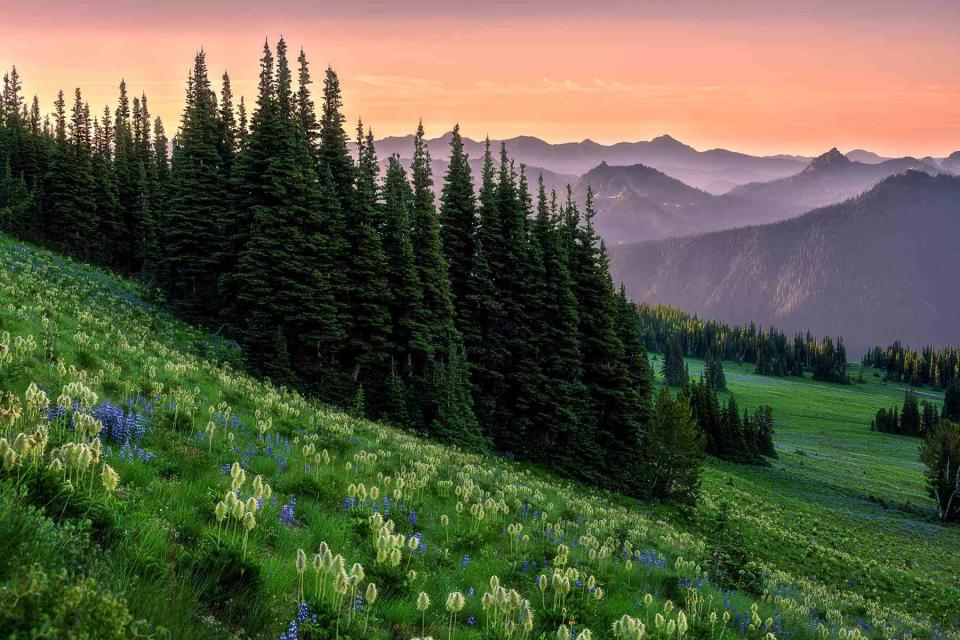
Peter Jiang/Getty Images
The breathtaking views and brilliant landscapes of America’s national parks are enough to leave you captivated and awestruck well after you've left their boundaries. Every year, according to the National Park Service, millions of visitors drive, hike, camp, and bike through the 63 national parks in the U.S., and this magnetic draw to the wilderness is only increasing over time. Each park boasts a variety of unique landmarks, scenic lookouts, and wildlife, so you're sure to find something to pique your interest no matter which one you visit.
From cascading waterfalls to snowcapped mountains to dense forests, these naturally occurring wonders cause visitors to stop in their tracks year-round. Their beauty is inarguably apparent, thanks to the diversity of the protected lands and efforts made to keep them in pristine condition. Visits to these recreational havens provide the ideal escape for anyone seeking more peaceful surroundings.
Here are 12 of the most beautiful national parks in the U.S.
Sequoia National Park, California
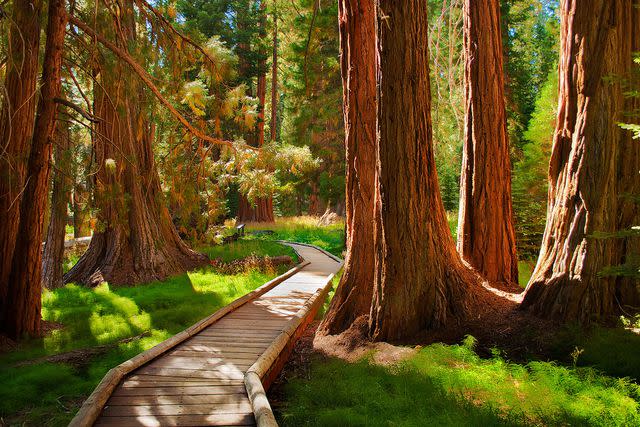
Quan Yuan/Getty Images
Home to the world’s largest tree, the 275-foot General Sherman tree, Sequoia National Park is teeming with sequoia groves on the western side of California’s Sierra Nevada mountains. The towering sequoia trees that comprise its Giant Forest stand hundreds of feet tall and are a mighty sight to behold. The splendor of this park shines through the extraordinary views from the many hiking trails and granite domes, including Moro Rock. Be sure to visit neighboring Kings Canyon National Park — both parks are operated in tandem and connected by the Kings Canyon Scenic Byway.
Great Smoky Mountains National Park, North Carolina and Tennessee
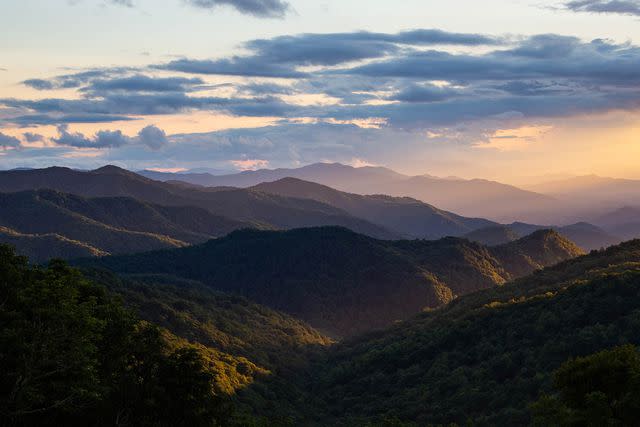
John Hudson Photography/Getty Images
As the most-visited national park in the U.S., Great Smoky Mountains National Park, named for the ubiquitous fog covering its mountains, spans across North Carolina and Tennessee. The majesty of its miles of rivers and streams is only amplified by its lush forests and plentiful wildlife. This verdant park is open year-round, but is at its colorful peak come October, when fall transforms the leaves to the brightest hues of red, orange, and yellow. Visit Cataloochee Valley during dawn or dusk for a chance to catch elk roaming the area, and drive through Cades Cove to scope out black bears, waterfalls, and historic cabins.
Denali National Park, Alaska
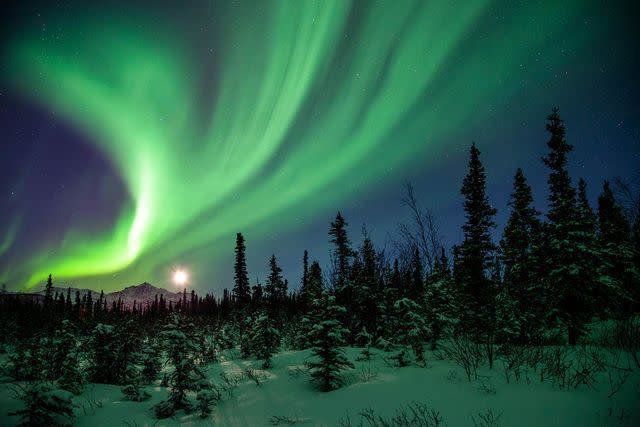
Daniel A. Leifheit/Getty Images
Alaska’s Denali National Park consists of an enormous 6.1 million acres and is named after North America’s tallest mountain, Denali. Although it's one of only three Alaskan national parks that are reachable by car, some visitors opt instead to take the National Park Service’s bus tours to traverse deeper into the park with a trusted guide. Bursting at the seams with impressive wildlife, sparkling rivers and lakes, and distinctive tundra vegetation, Denali National Park’s rugged terrain is best appreciated in the summertime.
Rocky Mountain National Park, Colorado
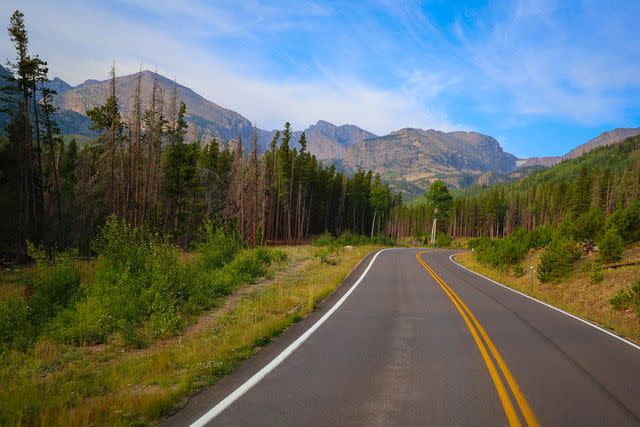
Wirestock/Getty Images
Across approximately 265,000 acres, Rocky Mountain National Park in Colorado encompasses everything from flowering meadows to breathtaking mountains to alpine lakes, in addition to more than 300 miles of hiking trails. The park is also home to a vast array of wildlife — including elk, bighorn sheep, and black bears — and forested areas. Spend some time fishing in one of the many designated lakes, like Sprague Lake, or simply take in the magnificence of a sunrise at Bear Lake.
Mount Rainier National Park, Washington
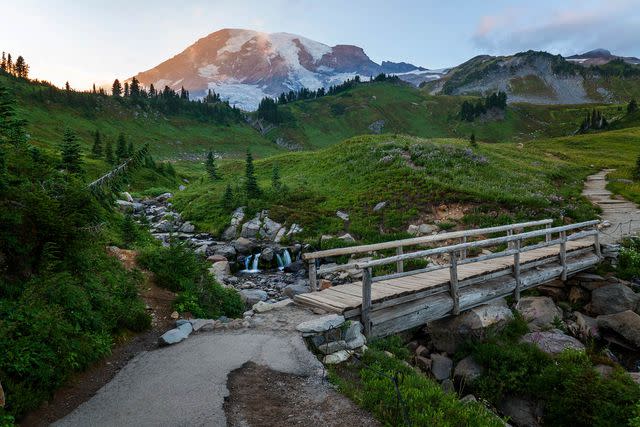
Josh Metheny/Getty Images
Situated in Washington, Mount Rainier National Park is named for the Cascade Range’s tallest volcano. With 25 named glaciers, Mount Rainier is the most glaciated peak in the contiguous U.S. This national park is an enchanting place with more than 275 miles of hiking trails that lead to waterfalls, lakes, and wildflower meadows. Take in the panoramic views of Mount Rainier at Sunrise, the highest point in the park that's accessible by car.
Haleakalā National Park, Hawaii
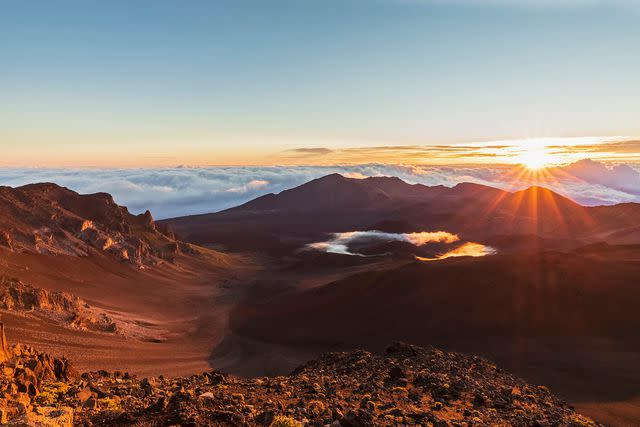
Westend61/Getty Images
No list of stunning national parks would be complete without Hawaii’s Haleakalā National Park. This tropical paradise consists of a massive shield volcano, which covers a great portion of the island of Maui, and also includes abundant waterfalls and rain forests. Drive to the summit of the Haleakalā crater for the most picturesque sunrise above the clouds. Remember to make a reservation in advance, as spaces are limited, and plan to stick around after the sunrise to spend time exploring some of the dozens of hiking trails.
Yosemite National Park, California
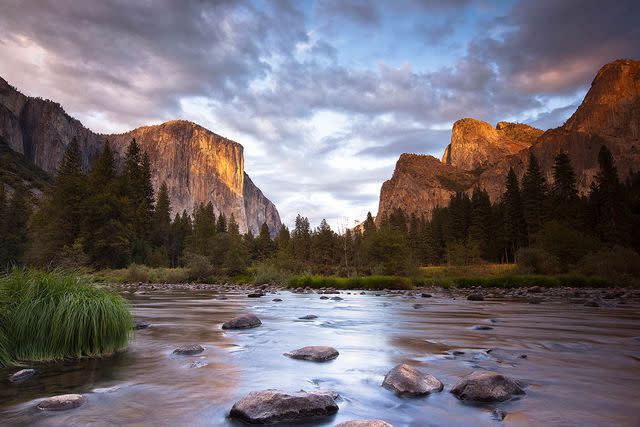
Andy Kennelly/Getty Images
Best known for its multitude of waterfalls and famous granite formations, Yosemite National Park in California is one of America’s oldest and most beloved national parks. Prepare to be mesmerized by Yosemite’s renowned landmarks — El Capitan and Half Dome — as well as Yosemite Falls, one of the world’s tallest waterfalls. Many visitors plan their stay around camping in Yosemite Valley, which is the best way to experience all of the natural beauty this park has to offer.
Arches National Park, Utah
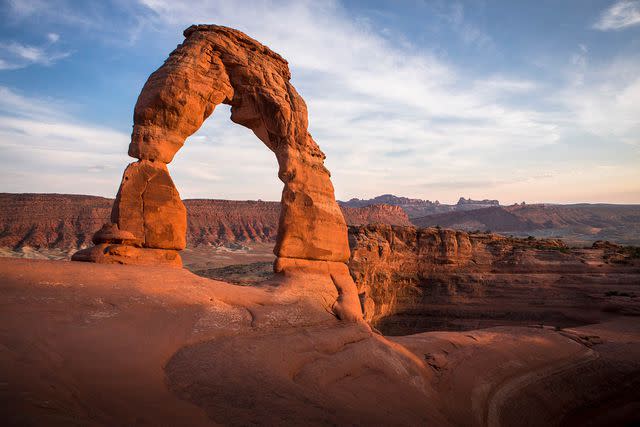
Steele Burrow/Getty Images
Whether you prefer to hike moderate trails or enjoy a scenic drive, Arches National Park will leave you breathless while you take in the vast red rock landforms and natural arches. With its more than 2,000 natural stone arches, this park is mostly known for its Windows Section and Delicate Arch viewing points. Plan to visit in the early morning or late afternoon for a less crowded environment, and stick around after sunset for the ultimate stargazing under crystal-clear night skies.
Grand Teton National Park, Wyoming
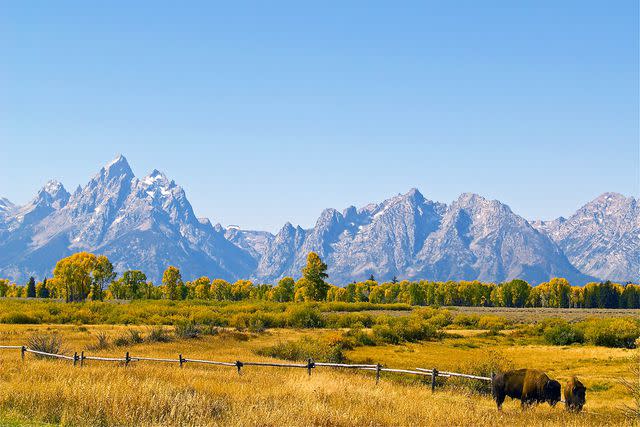
Alex Cassels/Getty Images
The soaring Teton Range of Wyoming’s Grand Teton National Park is just one of the astonishing features that make this park so widely frequented. Located in Jackson Hole, this serene landscape is home to glistening lakes, jagged terrain, and beautiful moose, mule deer, bison, and elk. Spend your time here climbing or hiking in the Teton Range, fishing for trout, and cruising around the Jenny Lake Scenic Drive.
Kenai Fjords National Park, Alaska
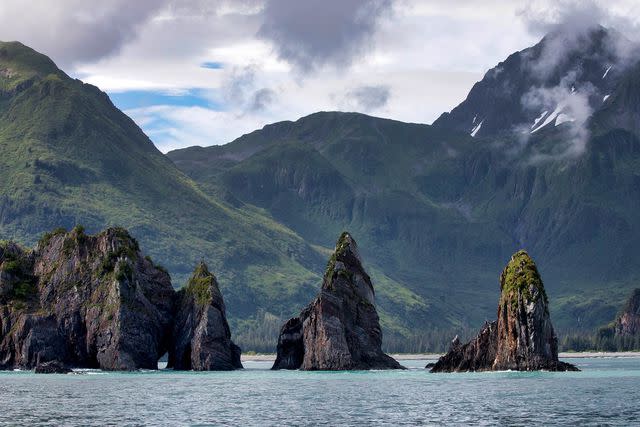
Daniel A. Leifheit/Getty Images
Located on Alaska’s Kenai Peninsula, Kenai Fjords National Park covers more than 600,000 acres of glacial paradise. This remote park is known predominantly for the grandiose Harding Icefield — the largest in the U.S. — as well as the many coastal fjords. Follow the Exit Glacier View Loop trail for a closer look at the glacier and Harding Icefield. Check out the tidewater glaciers and marine wildlife by taking a boat tour from nearby Seward, or spend the day fishing on a charter boat as you explore the park’s waters.
Yellowstone National Park, Wyoming, Montana, and Idaho
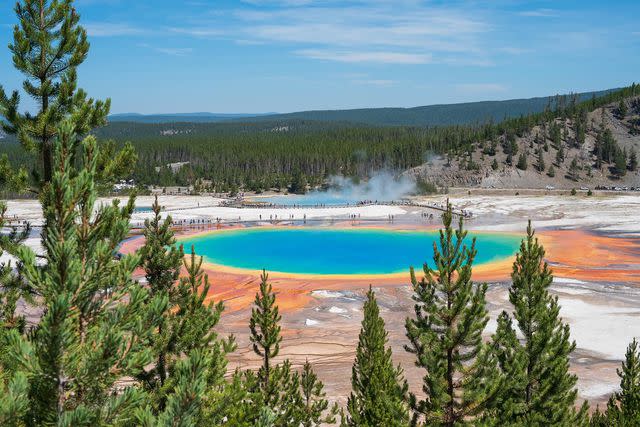
Laurie Ambrose/Getty Images
As America’s first established national park, Yellowstone stretches across more than 2.2 million acres and is known for its iconic geysers and hot springs, most notably Old Faithful and Grand Prismatic Spring. Seeking to preserve the grandeur of its wilderness, Yellowstone ensures its visitors maintain their viewing distance from the native animals, including bison, black bears, elk, and moose. Not to worry — if you spend time driving through the park, hiking the many trails, and sightseeing at Yellowstone Lake and Lamar Valley, you're sure to catch an array of wildlife safely from a distance.
Glacier National Park, Montana
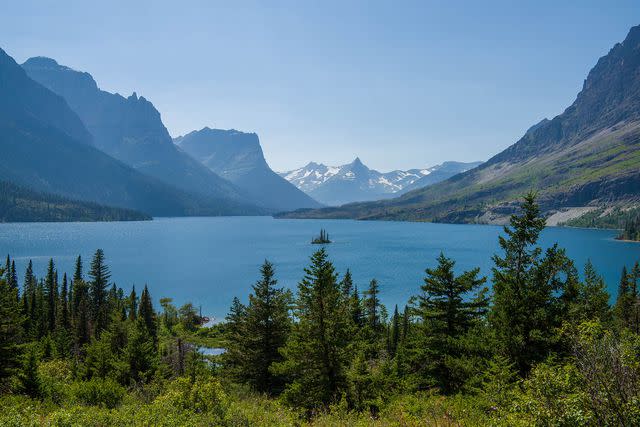
Shawn Dechant/Getty Images
With its gorgeous mountains, pristine lakes, and more than 700 miles of hiking trails, Glacier National Park in Montana is affectionately known as the "Crown of the Continent," and for good reason. As a favorite park for adventurous travelers, there is no end to the amount of outdoor recreational excursions available: hiking, camping, biking, fishing, and boating, to name a few. For the quintessential Glacier National Park visit, take the Going-to-the-Sun Road for 50 miles of stunning vistas, bisecting the east and west sides of the park.
For more Travel & Leisure news, make sure to sign up for our newsletter!
Read the original article on Travel & Leisure.

